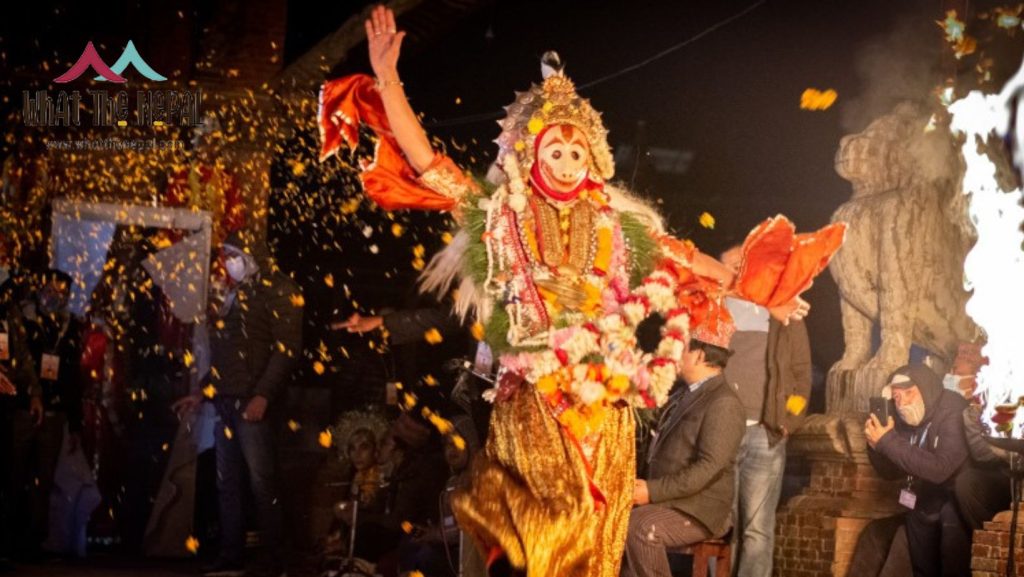
In the heart of Nepal, amidst the ancient city of Patan, a mesmerizing spectacle unfolds every year in the month of Kartik, which typically falls in October or November. This grand performance, known as Kartik Naach, is more than just a dance; it’s a cultural masterpiece that weaves together history, tradition, and spiritual devotion.
Origins in the Reign of Malla Kings:
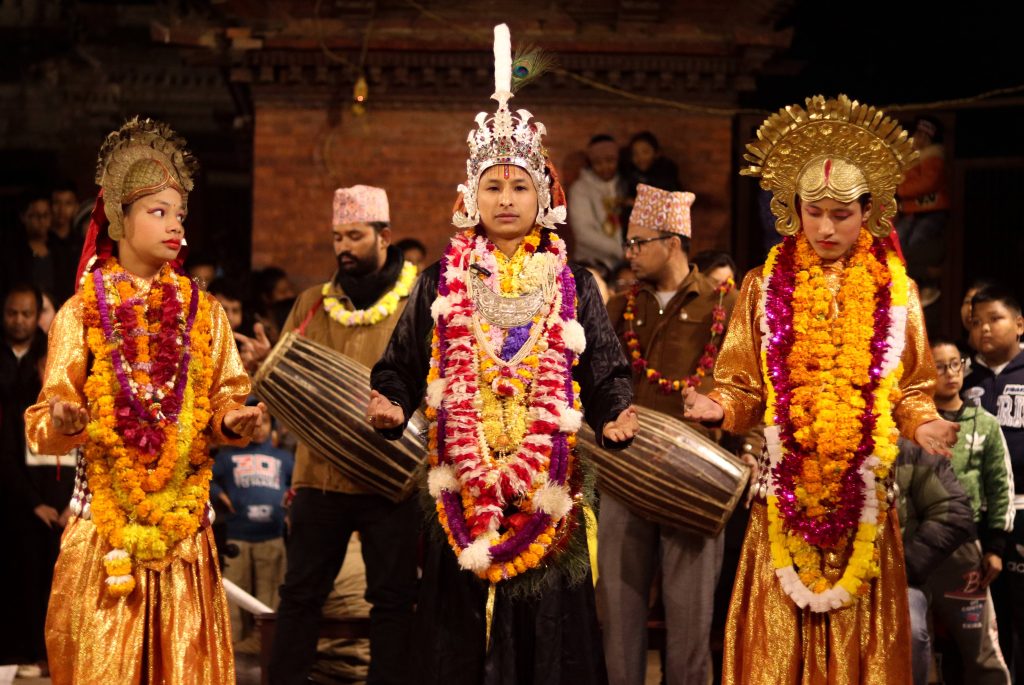
The story of Kartik Naach began in the year 1641 AD when the visionary Malla King Siddhi Narsingh Malla decided to infuse the pages of history with a grand cultural narrative. He conceived Kartik Naach, a musical dance play that would not only entertain but also edify.
A Dance for the Gods:
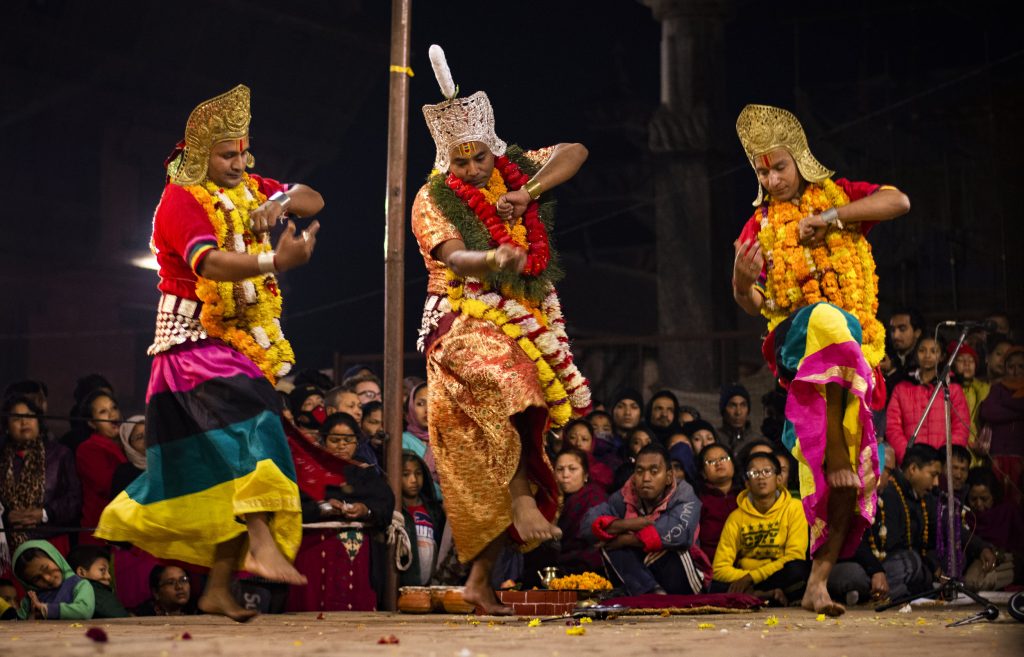
Kartik Naach is performed in the opulent Kartik Dabali, located in the enchanting Patan Durbar Square. Here, for a span of two to twenty-seven days, the tales of the Hindu god Vishnu come to life in all their vivid glory. What once was a two-day spectacle has expanded over the years, thanks to the benevolent reigns of Narsingh Malla’s son, Shree Niwas Malla, and his grandson, Yog Narendra Malla. The play now encompasses 17 tales that captivate the audience’s imagination.
Guardians of Tradition:
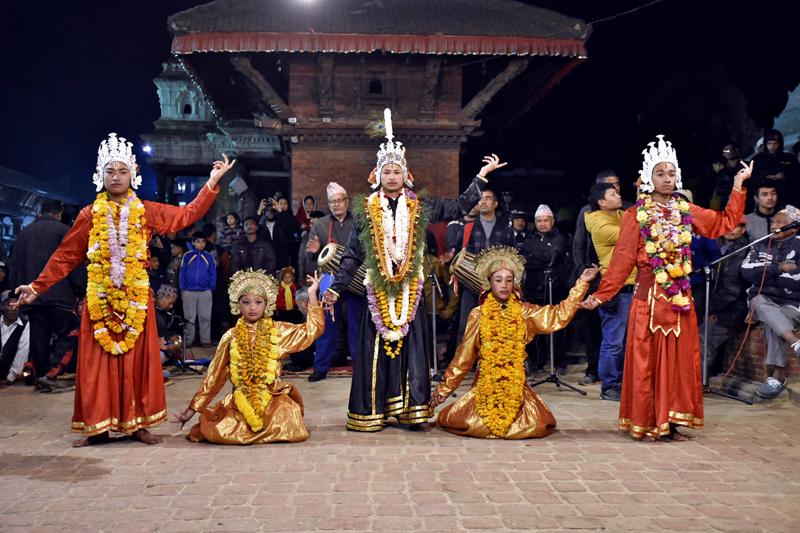
The responsibility of preserving this cultural treasure was initially entrusted to Kartik Naach Prabandhan Samiti. However, since 2013, the mantle has been carried by the Kartik Nach Preservation Committee (KNPC). This transition signifies the enduring importance of this performance to Nepal’s cultural heritage.
Dancing Deities and Resonant Melodies:
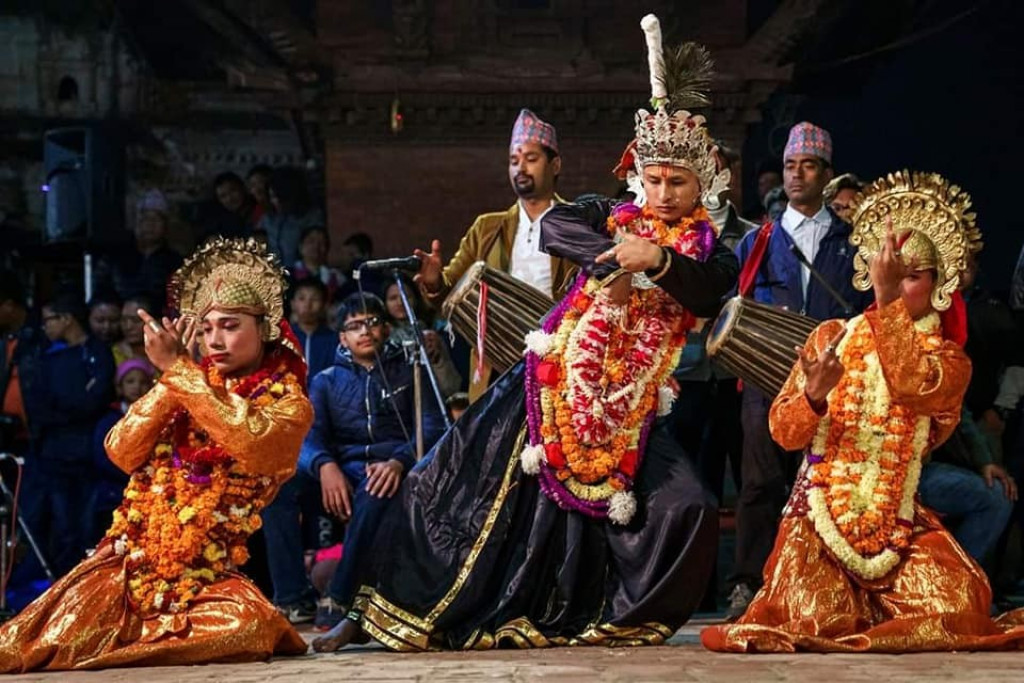
Kartik Naach opens with a breathtaking display of dancers adorned in vibrant costumes, embodying Hindu deities like Barahi, Ganesh, Shiva, and Krishna. Festoons drape around their necks, adding a touch of grandeur to the performance. The intricate dances and melodies are believed to be compositions of Narsingh Malla himself, although there have been subtle modifications over time.
The Enigmatic Golden Window:
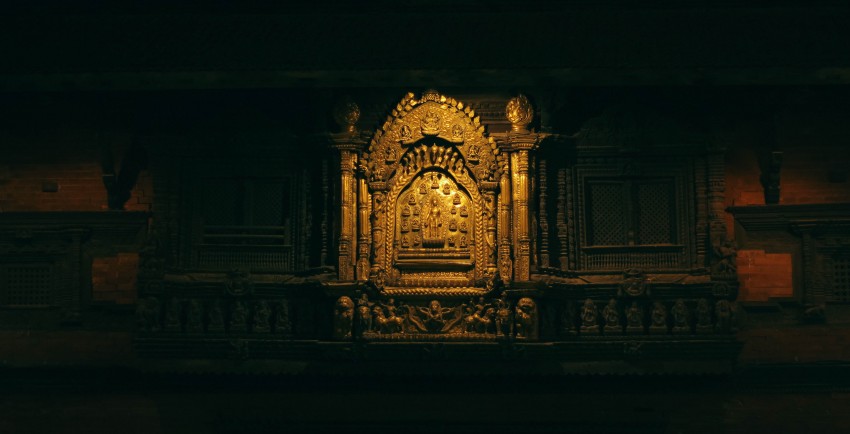
One of the most iconic aspects of Kartik Naach is its connection to the golden window in Patan. This window, which remains closed throughout the year, is opened solely during the performance. Legend has it that the window was erected in honor of King Siddhi Narsingh Malla, cementing the ties between this mesmerizing art form and its royal patron.
Resilience Amidst Adversity:
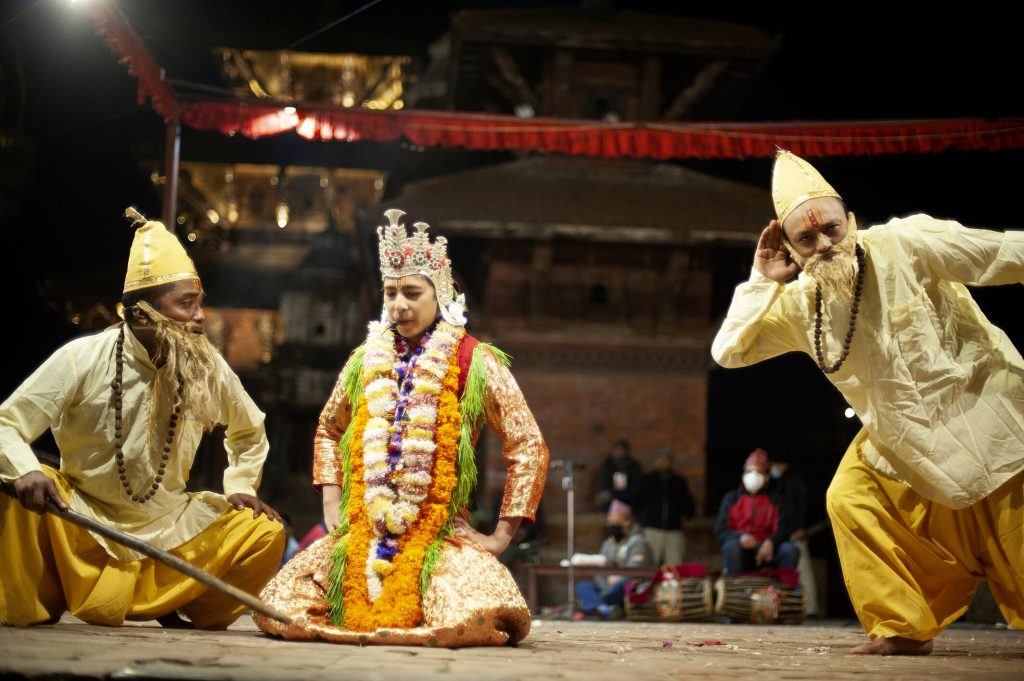
Even the devastating April 2015 Nepal earthquake couldn’t deter the spirit of Kartik Naach. Just seven months after the catastrophe, the performance graced the stage for ten nights, showcasing the resilience and determination of the Nepali people. In the face of adversity, thousands flocked to the temple to witness this open-air presentation of a historical dance-drama, accompanied by the soulful strains of folk music.
Nurturing the Tradition:
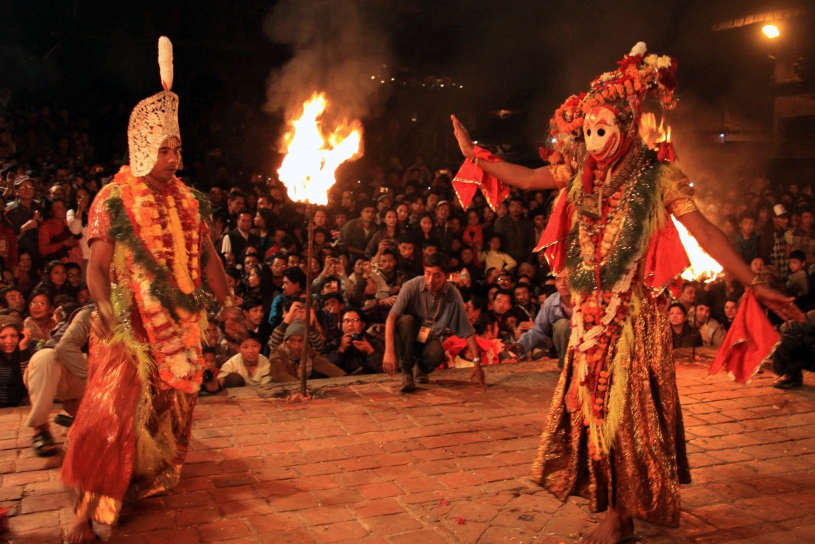
The importance of Kartik Naach is evident through the ongoing support it receives. In 2018, Lalitpur distributed 200,000 Nepalese rupees to sustain this cultural gem, a testament to its enduring significance.
In Kartik Naach, history, culture, and devotion converge in a splendid display that continues to mesmerize and inspire. This annual performance is not just a dance; it’s a living testament to Nepal’s rich heritage, resilience, and unwavering devotion to tradition. Kartik Naach reminds us that, in the dance of life, some traditions are simply timeless.
Also Read: CAAN Extends a Helping Hand Rs10 Million Aid for Quake Survivors




